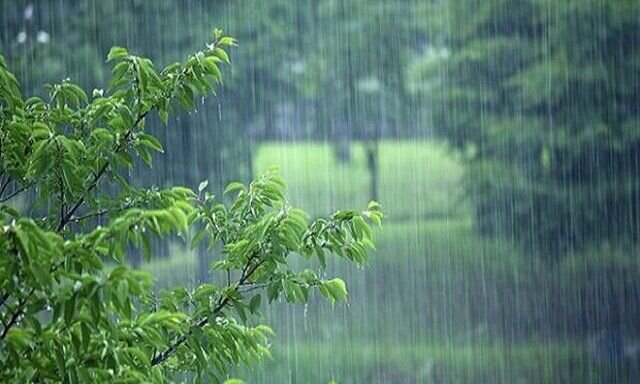Rainfall increases by 16% since mid-March yr/yr

TEHRAN –According to Metrological Organization, since the beginning of the current Iranian calendar year (March 20), the country has experienced an increase of 16 percent in precipitation compared to the same period a year before.
However, Tehran, Semnan, and Qazvin are among the provinces that have received severely low rainfall.
From March 20 till April 22, precipitations amounted to 43 mm which shows an increase of 16 percent compared to 37 mm long-term average rainfall.
Since the beginning of the current water year (September 23, 2023) till April 22, a total of 167 mm of rainfall has been recorded in the country. It represents a 16 percent decrease from the long-term average of 198 mm.
According to statistics, Semnan (44 percent), Tehran (40 percent), Qazvin (39 percent), and Khorasan Razavi ( 37 percent) provinces have received lower amounts of rainfall compared to normal conditions.
The central, southern, and southeastern parts of the country have also experienced notably low rainfall.
Fars, with 30 percent, Hormozgan, 28 percent, and Kerman, 25 percent, have had lower than normal precipitations.
The average temperature has been 1.5 to 2 degrees cooler.
Last week, in West Azarbaijan, East Azarbaijan, and Ardabil provinces, the temperature was 4 and 5 degrees Celsius above normal. However, in Kerman, South Khorasan, Sistan-Baluchestan, and Yazd provinces it has been 4 to 7 degrees Celsius colder than the long-term average.
From March 20 to April 22, the temperatures in Tehran, Qazvin, Semnan, North Khorasan, Razavi Khorasan, South Khorasan, as well as West and North-West provinces were within or above normal ranges.
The above-mentioned provinces are going through the fourth consecutive year of serious water scarcity.
Since the beginning of autumn which is the start of the current water year, an average of 118 mm of rain has been recorded nationwide, Ahad Vazifeh, head of the national center for drought and crisis management, said on March 11.
The long-term average recorded last year was equal to 141 mm.
Fars, Hormozgan, Kerman, Semnan, Khorasan Razavi, Qazvin, Alborz, Tehran, Lorestan, and Kohgiluyeh–Boyerahmad provinces have had low rainfall.
Kerman, Qazvin, Tehran, and Alborz provinces have received 50, 39, 33, and 34 percent less rainfall than the long-term average.
Mazandaran, Golestan, Kuodestan, and Sistan-Baluchestan provinces have recorded more rainfall compared to the long-term average.
Vazifeh went on to say that the average temperature of the country has been 13.3 °C since the beginning of fall, September 23, which compared to the three-year period figure,11.3 °C, shows the temperature has increased by 2 °C over time.
Since the beginning of winter, the temperature has been 9.1 degrees, while it had been 7.1 degrees in long-term average. The last two months of the fall this year were the hottest months on record in the past 50 years, Vazifeh added.
MT/MG
Leave a Comment